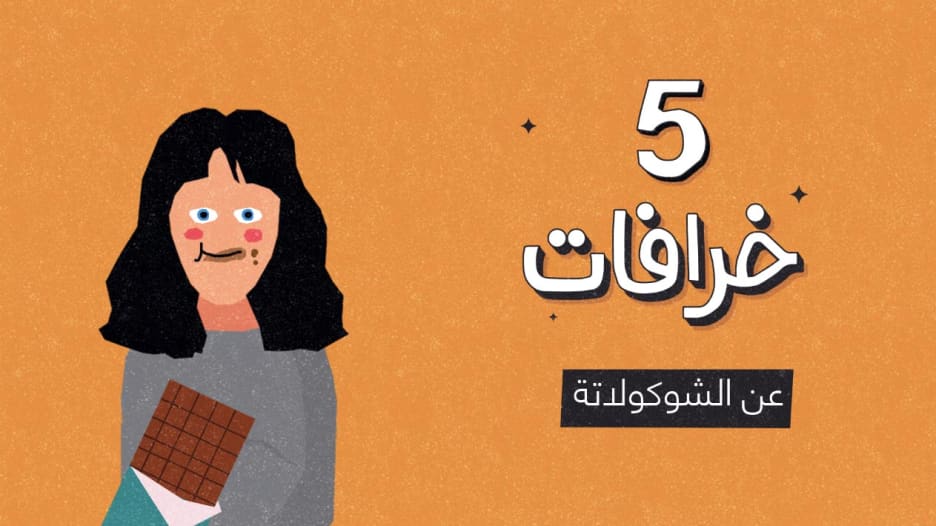دبي، الإمارات العربية المتحدة (CNN)-- العلاقة بين الشوكولاتة وعيد الحب هي علاقة حديثة إلى حد ما وفقاً للمعايير التاريخية، فهي تعود إلى أقل من 200 عام.
ونشأت العلاقة بين الشوكولاته وعيد الحب من التسويق.
من الطعم المر إلى الحلو
ولم يكن هناك أي شيء رومانسي عن الشوكولاتة عندما كانت في أقدم أشكالها.
وكان "Xocolatl"، أو "الماء المر" ، مشروباً من أمريكا الوسطى مصنوع من حبوب الكاكاو المطحونة، والفلفل الحار، والتوابل. واختار المستكشفون الأوروبيون المشروب، وأحضروه إلى إسبانيا، وفرنسا، وإنجلترا، بحلول القرن السابع عشر.
وكان الوصول إلى الشوكولاتة وسيلة للطبقة الحاكمة لتأكيد هيمنتها، وعلى هذا النحو، كان المشروب "مرتبطاً بالذكورة والرجولة"، وفقاً لأستاذ دراسات الطعام وأنظمة الغذاء في جامعة ولاية "مونتكلير" في نيوجيرسي، تشارلز فيلدمان.
وحتى الثورة الصناعية، كانت الشوكولاتة مرتبطة حصرياً بالأثرياء لأنهم كانوا الوحيدين الذين تمتعوا بوسائل الاستمتاع بها.
وكان السكر والشوكولاتة عبارة عن "رفاهية، ومتعة باهظة للقلة المحظوظة التي تمكنت من تحمل تكلفته"، وفقاً لما ذكرته مؤسسة "Chocolate Noise" ومؤلفة "Bean-to-Bar Chocolate: America's Craft Chocolate Revolution"، ميغان جيلر.
وبحلول القرن التاسع عشر، أصبح السكر سلعة، وحول ذلك الكاكاو المحلى إلى أمر تمكنت الطبقة العاملة من الوصول إليه، بما في ذلك النساء.
وبمجرد تمكن النساء من الاستمتاع بالشوكولاتة، تغيرت دلالة المنتج من طابعه الذكوري إلى الأنثوي، وفقًا لفيلدمان.
وأصبحت أوصاف ذلك العصر المتعلقة بالأنوثة، أي اللطف، والسذاجة، والنعومة، والترف، مرتبطة بالشوكولاتة.
عبوات على شكل قلب
وكانت الملائكة والورود جزءاً من اللغة العامية الرومانسية بحلول القرن التاسع عشر، ولكن قام شخص واحد بتوحيد الشوكولاتة وعيد الحب معاً.
وحظي صانع الشوكولاتة البريطاني، ريتشارد كادبوري، بفكرة في عام 1861، إذ بدأ بتعبئة حلويات الشوكولاتة الخاصة بشركته في علب على شكل قلب.
وكان من الأمكن استخدام "الصندوق الفاخر"، بحسب تعبيره، لتخزين التذكارات مثل رسائل الحب، ما منح العلبة طريقة أخرى لاستخدامها.
وبدأت شركات الشوكولاتة في إنتاج الصناديق في مجموعة متنوعة من الأساليب باستمرار لجذب العملاء.
وقال فيلدمان إن ذلك منح الرجال الفرصة لإظهار ذوقهم "من خلال اختيار الصندوق المناسب لامرأة معينة".
وزُينت الصناديق بالحرير، والساتان، والأشرطة، وهي زينات فاخرة جعلت الشوكولاتة بداخلها أمراً ثانوياً تقريباً.
وبحلول ثلاثينيات القرن العشرين، قام صانعو الشوكولاتة الأمريكيين بإنتاج سلع وإعلانات عيد الحب التي استهدفت النساء كمتلقيات للتصميمات الجميلة.
يوم "فالنتاين"
وبعد قرون من وصول أول صندوق على شكل قلب إلى المتاجر، ظلت الشوكولاتة والنساء متشابكتين، إذ تشير الثقافة الشعبية والأبحاث العلمية إلى أن النساء يشتهين ويستهلكن حوالي ضعف ما يستهلكه الرجال.
وأصبح ليوم "جالنتاين" (Galentine's Day) ، الذي صيغ في حلقة من برنامج "Parks and Recreation" في عام 2010 كعطلة قريبة لعيد الحب للاحتفال بالصداقة بين الإناث، حياة خاصة به.
والآن، أصبح ذلك اليوم صرخة ضد التسويق الذي يركز على المغايرة جنسياً في عيد الحب، إلى جانب كونه شعاراً لبيع المزيد من الشوكولاته للنساء.
وحتى لو كانت الرسالة قد استحوذت طابع تمكين المرأة بشكل أكبر، إلا أن "شركات الشوكولاتة الكبرى تفعل ما كانت تفعله دائماً بالصناديق على شكل قلب، والحلويات"، بحسب ما قالته جيلر.
وحتى في اليابان، حيث لم يُحتفل بعيد الحب إلا منذ عام 1958، فإن صيحة شراء "شوكولاتة الصداقة" أصبحت تحل محل التقليد الثقافي للبلاد الذي تقوم النساء فيه بإهداء الشيكولاتة للرجال.
وفي جميع أنحاء العالم، من المحتمل ألا يتوقف التسويق لعيد الحب أبداً.
وأوضحت جيلر أنه بالنسبة لأولئك الذين يعملون في مجال الشوكولاتة ، "هناك موسم للشوكولاتة، وهو يبدأ في أكتوبر/تشرين الأول، ويمتد حتى عيد الأم".
وعيد الحب هو أحد أكبر الفرص لتحقيق الربح.







